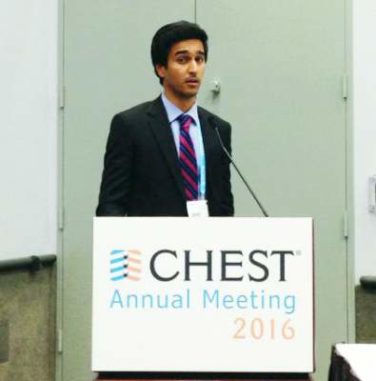FROM COMPREHENSIVE PSYCHIATRY
Nearly a quarter of schizophrenia patients also have symptoms of obsessive compulsive disorder, according to a recently published study in the journal Comprehensive Psychiatry.
Dr. Sugnyani Devi and colleagues at the National Institute of Mental Health and Neurosciences (NIMHANS) Department of Psychiatry in Bangalore, India, evaluated 200 patients admitted to the institute’s inpatient services unit between September 2010 and September 2011. Patients met DSM-IV criteria for schizophrenia, with a mean age of 33 years, and a mean age at illness onset of 25 years. The mean duration of illness was 8 years (Compr. Psychiatry 2015;56:141-8.
Symptoms were assessed via the Structured Clinical Interview for DSM-IV Axis I and II disorders (SCID I and II), the Positive and Negative Symptom Scale (PANSS), and the Yale Brown Obsessive-Compulsive Scale (Y-BOCS). Obsessive-compulsive disorder (OCD) was defined as a score of 16 or greater on the Y-BOCS assessment. Patients who showed OCD symptoms but scored less than 16 on the Y-BOCS test and did not meet DSM-IV criteria for OCD were considered as having obsessive-compulsive symptoms (OCS).
The prevalence of OCD/OCS in schizophrenia patients was 24% (n = 48). A total of 18.5% of patients had OCD (n = 37), and 5.5% (n = 11) had OCS, reported Dr. Devi and associates.
Of the 48 patients with OCD or OCS, 46 had both obsessions and compulsions. The mean total score on the Y-BOCS test was 22.25, with a mean of 10.93 for obsessions and 11.33 for compulsions, the authors reported. The most prevalent obsessions were contamination-related (n = 33, 68.8%), and cleaning was the most common compulsive behavior (n = 31, 64.6%).
The mean age at onset for schizophrenia was 19.95 years, and the mean age at onset for OCS was 19.88 years. A total of 64.6% of patients developed obsessive-compulsive symptoms before the use of atypical antipsychotics, the investigators noted.
Schizophrenia patients with OCD/OCS were significantly younger, with a mean age of 27.48 years (P < 0.001), and lived in urban areas (87.5%, P = 0.001). On post hoc analysis with the Mann-Whitney U test, patients in the OCD/OCS group also had significantly younger age at onset of schizophrenia (U = 1242; z = 5.26; P < 0.001), lower PANSS positive scores (U = 2046; z = 2.57; P = 0.001), and better environmental quality of life (U = 1745; z = 3.59; P < 0.001), the investigators said in the report.
“The prevalence of OCS/OCD in our study is consistent with the results of most previous studies but higher than that reported in some studies,” the authors wrote.
Although a higher prevalence of OCD/OCS in schizophrenia has been established, the effect of these symptoms on schizophrenia is inconclusive, and further study is needed to establish a separate diagnostic category of “schizo-obsessive disorder,” they added.
The results of this study “further highlight the importance of assessing OC symptoms in schizophrenia patients owing to high prevalence of OCS and OCD in subjects with schizophrenia,” they added.
The investigators did not report any disclosures or conflicts of interest.




